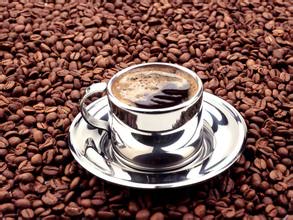How did it change from a seed to a delicious cup?
I followed the grower to the treatment plant. Here bags of green beans are removed from the parchment (a dry film on the surface of the beans), sorted and graded according to quality. Don Arilio told me about a time when he thought his coffee was selling for too little, so he shipped it all back to the plantation and waited until the price reached its expected value before selling it here. Because of the excellent quality of his beans, his coffee sells for the highest price here, and the coffee is also rated as Premium coffees. You know, Colombia specialty coffee is popular in the American coffee roaster community.
Coffee growers like Don Arilio spend a lot of energy, time and money cultivating the best quality coffee. That's why Colombia's high-quality specialty coffee is enjoying a renaissance in the U.S. market. Geoff Watts, vice president of Chicago Intelligentsia Cafe, once called Colombia "one of the best places in the world to produce coffee." Robin Pollard once said,"I always encourage people I meet to learn about coffee's origins and to realize that coffee, like wine, is fermented, roasted, and brewed in a way that greatly affects its final taste." She hopes coffee lovers in Seattle and around the world will "read more books and blogs about coffee." If you think my experience makes you fascinated, then you have stepped into your coffee hall.
Don Arilio chose to process the fresh-picked fruit on his plantation. You can overlook the exquisite green bean processing workshop from the top of the hill. The fruit falls down a pipe in the roof into a Rube Goldberg-esque desizer. The vibrations of the machine separate the peel and pulp from the beans. The beans then go into a washing machine. The washing machine cleans the residual mucous membrane on the surface of the raw beans. This process requires a long fermentation period. Eventually, the green beans fall into a tank, where they can be washed and sorted manually.
The last step before the beans leave the factory is drying. Green beans are spread evenly in a greenhouse-like drying shed. This process is extremely important. Green beans must be completely and evenly dried to achieve the highest quality. Drying usually takes 5 days. Until the color of the green beans is up to par, they are bagged and shipped to local centralized processing plants for sale.
Don Arilio first showed me how coffee grows. His saplings are disease-resistant trees specially selected by the FNC Society's research arm based on local soil and climate characteristics. He also said that the FNC Association's research branch is funded entirely by export tariffs on coffee. Coffee seeds are buried in a nursery box. The soil in the incubator came from a nearby riverbed. After a few weeks, Don Arilio would move a quarter of the seeds, the fully germinated saplings, into individual bags ready for planting. The distance between trees depends on the altitude of the planting site. After 18 months of vigorous growth, coffee trees begin to bear attractive coffee fruit. Every five years, growers prune coffee trees. Each coffee tree needs at most three prunes, meaning the plant lives for about 15 years.
After that, we had a quick tour of the entire plantation. There are no ladders on the plantation. The coffee fruit can be picked by the picker at any time. There was only one picker here. He always carries a radio with him and a small bag around his neck. Elsewhere, plantations often need more helpers during harvest season. But pickers are often mobile, and with so many crops to pick across the country, finding enough people is difficult. The picker was extremely fast. He could pick out the reddest and purest fruits from the colorful fruits in a few moves. As he explained to me how to pick and harvest fully ripe coffee, he continued to pick, picking at an unrelenting rate. At the end of the day, he would give the coffee fruit in his pocket to the owner in exchange for money. Wages are calculated according to the kilos of fruit and the proportion of fully ripe fruit.

Important Notice :
前街咖啡 FrontStreet Coffee has moved to new addredd:
FrontStreet Coffee Address: 315,Donghua East Road,GuangZhou
Tel:020 38364473
- Prev

The effect of the amount of coffee powder on coffee flavor-can coffee powder be brewed directly
The effect of the amount of coffee powder on the flavor of coffee-can coffee powder be brewed directly, and this part of the soluble matter comes from the amount of coffee powder. So, we can get the extraction rate (extraction yield), that is, the gram weight of the EY= TDS/DOSE that can be dissolved divided by the amount of powder used, and we know how much is extracted. And in the vast majority of cases, whether it's Italian,
- Next

Xiamen unmanned coffee shop is self-sufficient if it is cooked by itself.
Unattended store self-sufficient walked into the inconspicuous wooden door nest shop in the arcade on the university road and saw a puppy squatting in front of the store. More than a dozen framed photos taken by professional cameramen hang on the white walls on both sides. All kinds of novel and strange old objects are placed neatly or staggered in every corner. The seven guestbooks on a small table are full of tourists' comments after their visit here.
Related
- Beginners will see the "Coffee pull flower" guide!
- What is the difference between ice blog purified milk and ordinary milk coffee?
- Why is the Philippines the largest producer of crops in Liberia?
- For coffee extraction, should the fine powder be retained?
- How does extracted espresso fill pressed powder? How much strength does it take to press the powder?
- How to make jasmine cold extract coffee? Is the jasmine + latte good?
- Will this little toy really make the coffee taste better? How does Lily Drip affect coffee extraction?
- Will the action of slapping the filter cup also affect coffee extraction?
- What's the difference between powder-to-water ratio and powder-to-liquid ratio?
- What is the Ethiopian local species? What does it have to do with Heirloom native species?

